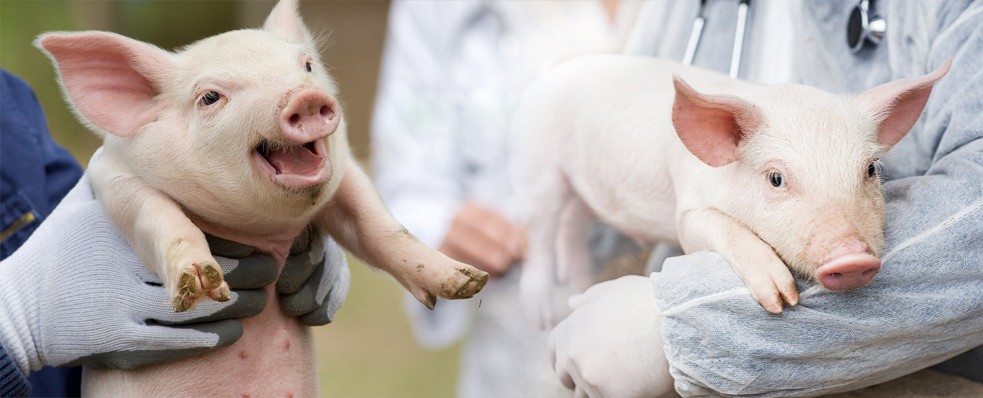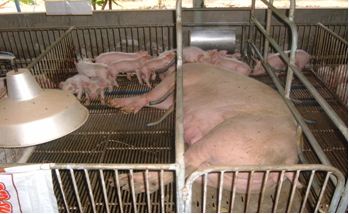
1. Pregnant stage Sows breed at 6 to 8 months (weight about 80 - 110 kg), depending on the caring conditions. However, the best breeding time is when the sows are over six months old and weigh at least 90 kg. When the pig is breeding (cycle of 21 days), the most appropriate time for insemination is when the sow stands still for the semen to cover (the ears stand up) or when we press with both hands on the sow’s rump, giving the same phenomenon. The mating should be done twice (double mating) 12-24 hours apart. Sows' pregnancy time is 110 to 117 days. The fetus grows most rapidly in the last month of gestation. During pregnancy, sows need to be provided with adequate nutrients to store the body and nourish the fetus. The sows' diet should contain at least 5-7% fibre at the end of gestation. This amount of fibre helps prevent constipation in pigs. Diet for sows should provide adequate vitamins and minerals. Lack of minerals results in piglets growing slowly and paralysis of sows after birth. Sufficient and balanced sow feed rations will prolong reproductive life. If the sows are kept in a communal barn, we must transfer them to the farrowpen before the 110th day of gestation.
 |
 |
2. After-birth period The farrowing pen must be cleaned and disinfected carefully 5-7 days before the delivery of farrowing sows. Before putting the sow into the farrowing pen, wash the belly and udder with warm water. During the pre-birth period, sows should be fed the same diet as during pregnancy with higher fibre content to avoid constipation. When lactation begins, sows will give birth within 24 hours. Taking care of the sow during farrowing helps to reduce piglet mortality during and after farrowing. Laying time can last from 30 minutes to 5 hours. On average, each pig gives birth 15 minutes apart, but in some cases, up to several hours later. Oxytocin can be injected to support sows in the reproductive process in the following cases: ưeak pushing; after 30 minutes pushing but sows have not laid the next piglet, or the piglet has all come out, but the placenta has not come out. Oxytocin should not be used if the pig has not given birth yet, or if sows have strong pushing but the piglets do not come out. It is necessary to check before using the drug (this may be due to the fetus being breech, misaligned or stuck inside reproductive organs) Manual assistance applies only if sows show signs of being unable to deliver without help. Farmers should wear long gloves lubricated with vegetable oil or Vaseline mixed with antibiotics, and sows should be injected with antibiotics immediately after handling. After giving birth, sows are injected with antibiotics intramuscularly and into the vagina. Piglets should be fed colostrum (milk containing antibodies) immediately after birth. Sows are only able to produce colostrum 24 to 36 hours after delivery. Piglets can only directly absorb antibodies through small intestinal epithelial cells from the first hour after birth to 18-24 hours later. When newborns suck colostrum immediately, it also stimulates the sows to push for faster farrowing with less placenta left.
Providing essential nutrients for sows to grow naturally and safely, FAMILK has extracts of saponin and ginsenosides, diosgenin and other vitamins and minerals peptide chelates. FAMILK can help stimulate appetite, support energy and nutrition, enhance milk production and quality, increase immunity, increase conception and herd size, reduce sows' weight deficiency and elimination rate, avoid mastitis and metritis and stimulate the process of hematopoiesis.




